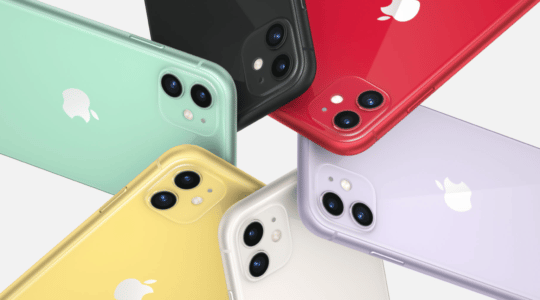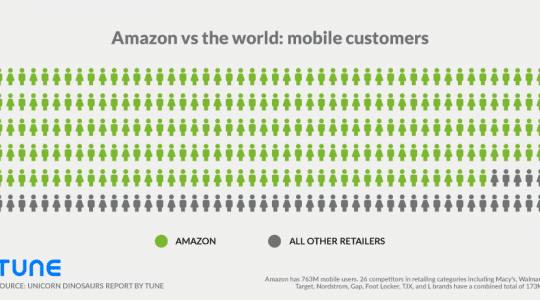Regardless of whether you’re running a campaign to acquire new users, re-engage existing users, or create brand awareness, the success of your mobile marketing efforts are largely dependent on ensuring your ads reach the right types of users. Taking advantage of the mobile targeting features provided by the tools and services you use can help improve your overall campaign performance and eliminate wasted ad spend.
The ability to connect marketers with specific types of users is one of the key differentiating factors of publishers and ad networks. Consequently, platforms are constantly looking for ways to improve their mobile marketing targeting capabilities. Discussed below are a few targeting updates from major industry players that have taken place in the last few months.

Twitter
After several months of beta testing, Twitter made tailored audiences available to their global customer base in December of last year. Described as “a new way for advertisers to define your own groups of existing potential customers, and connect with them on Twitter with relevant messages,” tailored audiences was a big step forward for Twitter’s targeting capabilities.
A few weeks ago, Twitter announced updates to tailored audiences that further enhance the targeting capabilities on the platform. The prominent changes include:
- Improved audience manager: Twitter’s audience manager enables you to view, update, delete, or modify all of your audiences from one interface. You can also receive status notifications that provide updates on your audiences.
- Look-alike-only targeting: This new feature enables you to only target users that are similar to your tailored audience, and according to the Twitter’s announcement is “particularly useful for mobile app promotion campaigns to reach users similar to those who have already installed your app.”
- Audience list uploading capabilities: Previously, you were only able to upload lists of email addresses. But Twitter now gives you the ability to upload lists of email addresses, mobile phone numbers, Twitter usernames, Twitter user IDs, or mobile advertising IDs.
Google Adwords
In September, Google sent out an email reminding AdWords advertisers of targeting changes that went into effect in July. The update included changing the device preference setting from “Mobile Only” to “Exclude Tablets.” According to the email, Google made these changes to “clarify that by selecting this option, your ads will only be eligible to appear on smartphones with full browsers, not on tablets.” If any of your AdWords ads have the “Mobile Only” (now “Exclude tablets”) box checked, as of October 15, this box will be unchecked.
Per the email from Google:
- If you’d like all of your app install ads to appear on both smartphones and tablets, no changes are required.
- If you’d prefer to exclude tablets from your ad targeting so that your ads only show on smartphones, we recommend that you re-check the “Exclude tablets” preference box.
If you currently have any Adwords campaigns, take a minute to verify that the device preference settings are selected as you intend.
Bing
Earlier this year, Bing announced targeting updates that went into effect mid-September. The updates built upon previous efforts to increase compatibility with Google AdWords and to simplify the Bing Ads experience. The most notable change is the consolidation of device targeting options.
Seen here are the old Bing Ads device targeting options:
And here are the current targeting options:
As you can see, marketers using Bing Ads were previously able to target by desktops and laptops, smartphones and other mobile devices with full browsers, and tablet devices. But with the updated options tablets are folded in with desktops and laptops. The announcement noted that “user’s search behavior and advertiser performance is similar between desktops and tablets,” so combining the devices made sense. However, marketers that experience a performance difference between PCs and tablets still have the ability to focus on tablets by increasing their bid.
Additional Bing mobile marketing targeting functionality is slated for early 2015, including the ability to “provide end users a way to download apps directly from popular mobile app stores in a single click from that ad.” These “app promotion” ads are expected to replace the OS targeting capabilities that are currently available.
Mobile Marketing Targeting Updates: In Summary
The mobile marketing targeting updates described above all took place within the last few months, but you should expect major platforms to continuously refine and enhance their targeting capabilities. Staying abreast of industry updates is important as it enables you to ensure current campaigns are operating as designed and that future ads are connecting with your audiences in the most relevant ways.
Author
Becky is the Senior Content Marketing Manager at TUNE. Before TUNE, she handled content strategy and marketing communications at several tech startups in the Bay Area. Becky received her bachelor's degree in English from Wake Forest University. After a decade in San Francisco and Seattle, she has returned home to Charleston, SC, where you can find her strolling through Hampton Park with her pup and enjoying the simple things between adventures with friends and family.







It is remarkable, this very valuable opinion